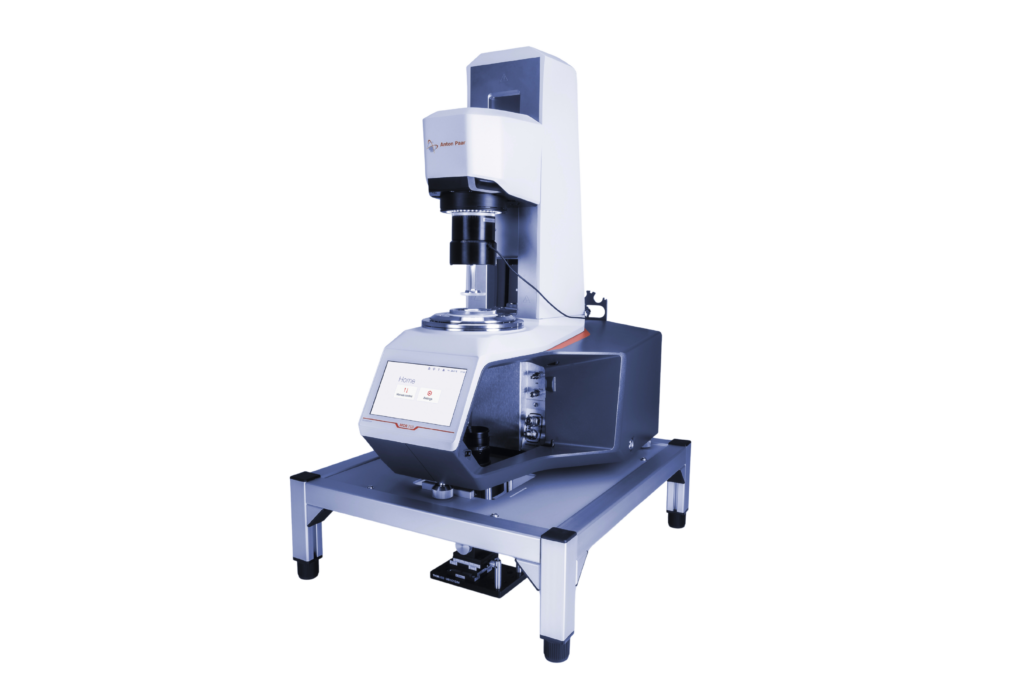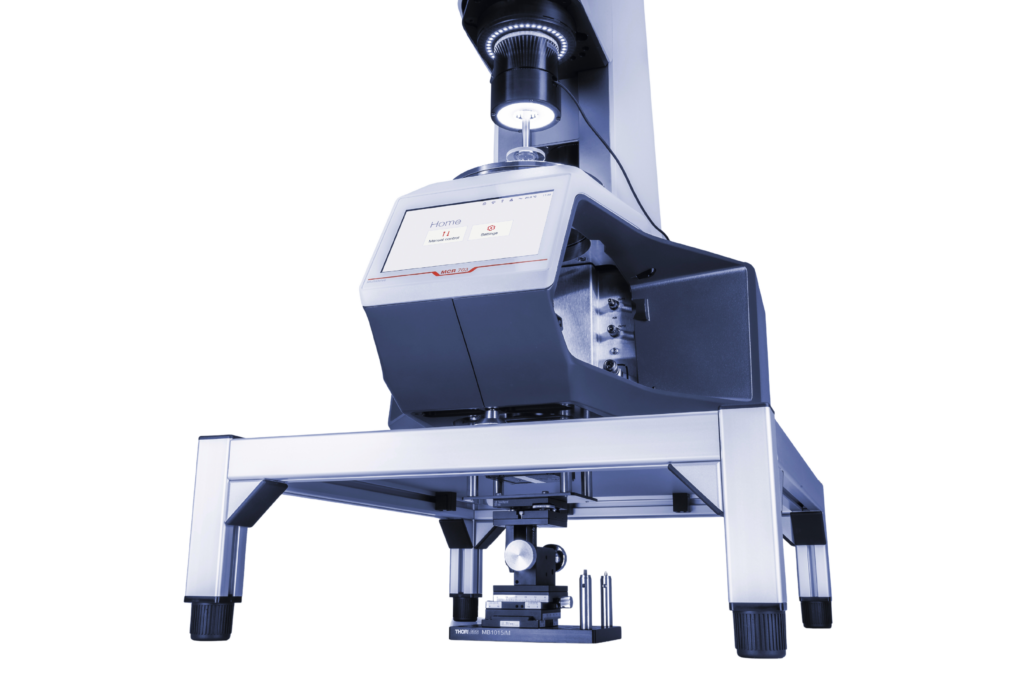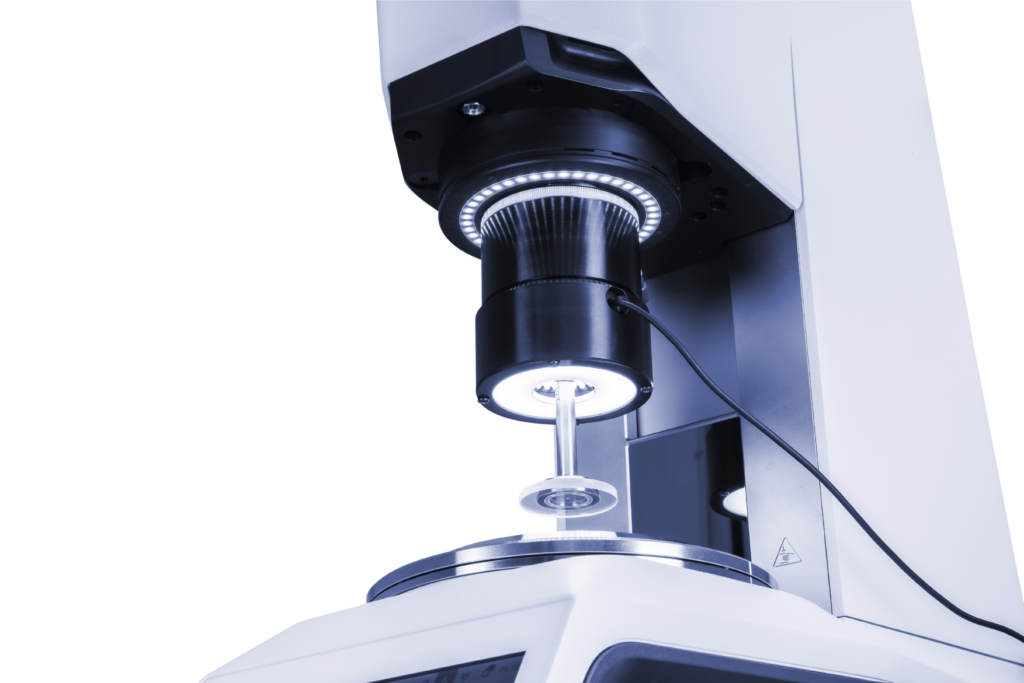Visualizing the “Invisible Changes” in Grease — Rheo-Iris: Rheometer × High-Speed Polarized Camera —
What is Grease?
Grease is a semi-solid lubricant widely used in automotive and industrial machinery, particularly in bearings and other components where metal surfaces slide against each other. Its role is to reduce friction and wear, ensuring reliable operation under demanding conditions.
Grease exhibits properties that are intermediate between those of liquids and solids—it flows under shear yet retains its shape when at rest. This unique duality makes grease a representative example of so-called soft matter.

Evaluating Grease Performance with a Rheometer
A rheometer is a key instrument for evaluating the performance of grease. By applying controlled stresses and strains, a rheometer measures how easily the material deforms or flows. This is particularly valuable for viscoelastic materials like grease, allowing us to quantify shear-rate and temperature-dependent viscosity, as well as structural breakdown and recovery processes.
However, rheological measurements alone cannot fully answer the question:
“Why does the material property change in that way?”
For multiphase systems like grease—composed of base oil, thickener, and additives—understanding the microscopic structural changes behind macroscopic property variations is crucial for material design and quality control.

Advantages of Rheo-Iris: Simultaneous Property and Structure Evaluation
Rheo-Iris is a system that integrates a rheometer with a polarized high-speed camera, enabling simultaneous, dynamic, and two-dimensional observation of both the material’s mechanical response and its internal structural evolution.


This approach allows visualization of phenomena that were previously a “black box,” such as:
- Breakdown and reformation of the thickener network
- Separation behavior of the base oil
- Emergence of orientation structures
By directly correlating structural transitions with changes in material properties, Rheo-Iris offers deeper insight into the hidden mechanisms governing grease performance.
Strain-Sweep Test and Polarization Imaging
In this case study, we examined two commercial greases:
- A general-purpose grease thickened with lithium soap
- A specialized high-performance grease (thickener type unknown)
The test protocol involved applying oscillatory shear at a fixed frequency while gradually increasing the strain amplitude, then decreasing it, to probe the relationship between viscoelastic response and structural changes.
A general-purpose grease
A specialized high-performance grease
Rheological Evaluation: Hysteresis in Viscoelastic Moduli
Using the rheometer, we measured the storage modulus (G’) and loss modulus (G”) as a function of strain:
- During strain increase, both G’ and G” decreased, indicating structural weakening.
- During strain decrease, G’ and G” did not return to their initial values, revealing a clear hysteresis loop.
- In the specialized grease, an additional drop in both G’ and G” was observed near a strain amplitude of 1, suggesting a distinct structural transition.
Polarization Imaging: Dynamic Observation of Internal Structure
The polarized high-speed camera captured birefringence patterns and principal axis orientation in real time:
- The general-purpose grease showed clear birefringence, whereas the specialized grease exhibited almost no detectable birefringence under the test wavelength (543 nm). This suggests the presence of structural features much larger than those in the lithium soap grease.
- In the general-purpose grease, birefringence increased with strain, then dropped sharply near a strain of 1, before increasing again. This reflects collapse and reformation of the thickener network.
- Simultaneously, regions emerged where the optical axis rotated from the radial to the flow direction, indicating dramatic structural reorganization.
- During the strain-decrease phase, birefringence changes and axis rotations reappeared. Interestingly, at lower strains, birefringence remained high with a spatial distribution different from the initial state—evidence of structural history dependence.
Linking Properties with Structure
This case study demonstrates how Rheo-Iris bridges the gap between rheological data and structural understanding. By showing that changes in storage modulus coincide with network breakdown and birefringence loss, or that hysteresis in modulus corresponds to asymmetric structural recovery, we can move beyond numbers and uncover the causal relationship between material properties and internal structure.
